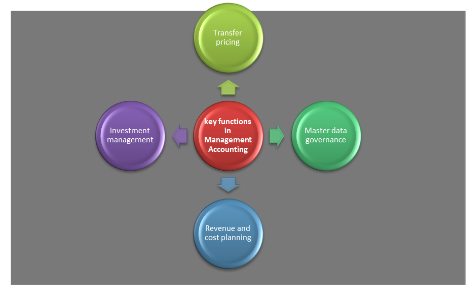What is SAP ERP Financials?
SAP ERP Financials provides modular applications that enable organisations to tailor SAP solutions to their specific business needs. These applications cover core accounting and reporting capabilities, receivables management, treasury, and shared services. They offer complete financial management solutions for a broad range of industries, one that furthers deep operational insight, unifies strategic action, and measures results quickly.
'Ensure financial compliance and rapid growth with SAP Enterprise Resource Planning Financials.'

What is SAP ERP Financials- Controlling?
Controlling is a significant aspect of SAP ERP. Financial Controlling provides an organization with reliable and accurate information for management decision-making. It facilitates coordination, monitoring, and optimization of all processes in an organization; and involves the recording of both the consumption of production factors, services provided by an organization, as well as the documentation of actual events. One can determine variances by comparing the actual data with the one that was planned earlier on. These variance calculations help in controlling business flows. Income statements, such as contribution margin accounting, are used for controlling the cost efficiency of individual departments, as well as that of the entire organization.
What is the Scope of Financial Accounting- Controlling?
- Cost centers accounting
- Profit centers accounting
- Profitability analysis
- Project system
- Activity- based costing
- Product costing
- Internal order
The SAP ERP Financial Controlling module involves closed cost accounting from various cost centers and the consideration of cost element accounting through profitability analysis.
Some key concepts are discussed below;
Cost Element Accounting
Cost Elements track the types of expenditures. They form categories of costs that are independent from external or financial reporting requirements, but help the management track all costs according to internal accounting policies.
Cost Centre Accounting
In business, a cost centre is a division that adds to the cost of an organisation, but only indirectly adds to its profit. Typical examples include research and development, marketing and customer services.
Profitability Analysis
Profitability Analysis enables an organization to evaluate various market segments, which can be classified according to products, customers, orders or any combination of these; or strategic business units such as sales organizations or business areas, (with respect to an organisations profit or contribution margin).
Two forms of Profitability Analysis are:
- Costing-based Profitability Analysis is the form of profitability analysis that groups costs and revenues according to value fields and costing-based valuation approaches, both of which can be self-defined. It guarantees access at all times to a complete, short-term profitability report. Cost of Goods sold is recognized after goods are billed; and before being shipped.
- Account-based Profitability Analysis is a form of profitability analysis organized in accounts and uses an account-based valuation approach. The distinguishing characteristic of this form is its use of cost and revenue elements. It provides a profitability report that is permanently reconciled with financial accounting. Cost of goods sold is recognized after goods are shipped and before being billed.
Profit Centre Accounting
Profit Centre Accounting determines profits and losses with profit centres using the popular period accounting or the cost-of-sales approach. It also analyzes fixed capital and the "statistical key figures" (number of employees, square meters, and so on) with respect to profit centres. Consequently, an organisation can calculate all key figures commonly used in cost accounting (return on investment, cash flow, sales per employee, and so on).